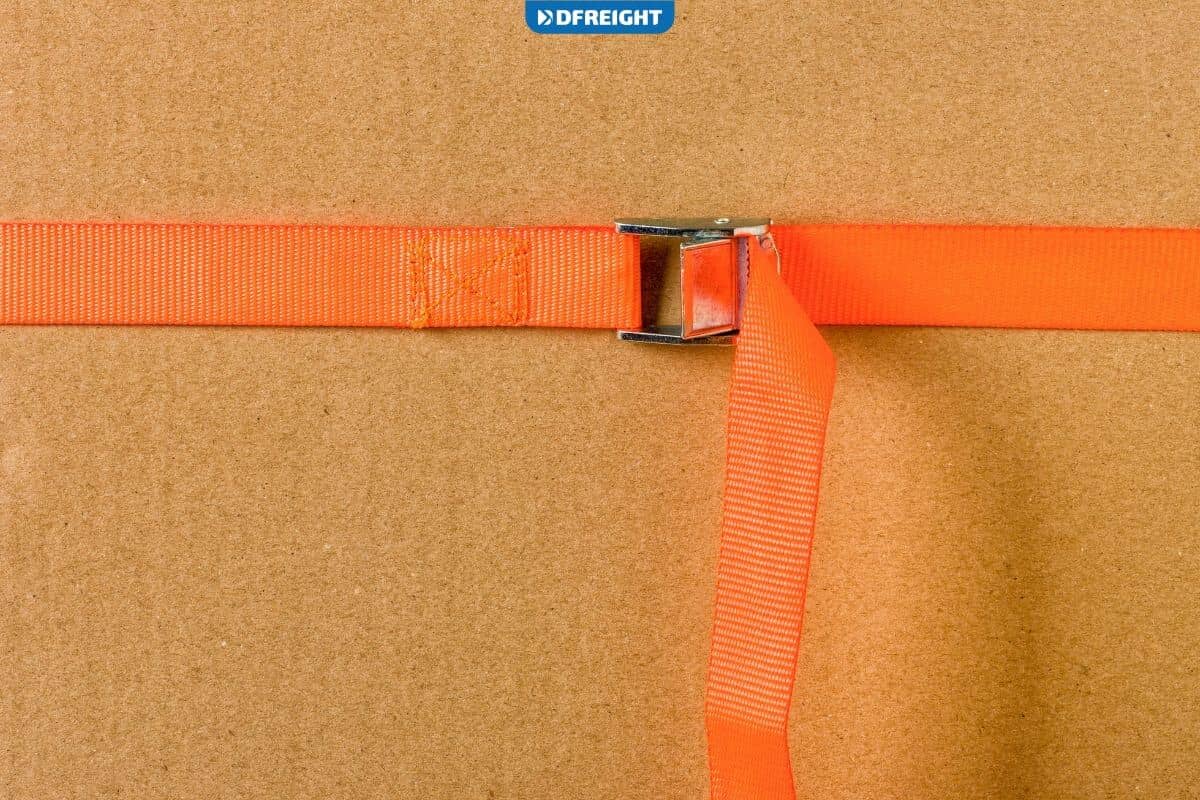Cargo blocking and bracing might sound like complicated terms, but they are essential concepts that play a crucial role in ensuring the safety of goods during transportation. Whether shipping items across the country or moving heavy objects within your home, understanding the basics of cargo blocking and bracing can help prevent damage and accidents.
This blog post will break down these concepts into simple, easy-to-understand steps. We’ll explain why cargo safety matters and what cargo blocking and bracing mean. Additionally, we’ll provide practical guidance on using the right materials and techniques to secure your cargo properly.
So, whether you’re a professional trucker, a homeowner, or just someone curious about cargo safety, read on to learn how to protect your goods and ensure they arrive at their destination intact.
Ready for Reliable Shipping? Contact DFreight Today and Experience Smooth, Hassle-Free Logistics!
Table of Contents
Why Cargo Safety Matters
Cargo safety is not just a technicality or an industry-specific concern; it affects us all. Whether you’re a consumer receiving a package in the mail or a business owner shipping products, understanding why cargo safety matters is crucial.
- Preventing Damage: Imagine ordering a fragile item online, only to receive it in pieces due to inadequate cargo safety measures. When cargo isn’t properly secured, it risks shifting during transit, leading to damage or breakage. Ensuring cargo safety helps protect your valuable goods from harm.
- Avoiding Accidents: Cargo not securely blocked and braced can pose serious safety risks on the road. Unsecured items can shift suddenly, causing accidents, injuries, or even fatalities. Whether you’re a driver or sharing the road with cargo carriers, safe cargo handling is a matter of public safety.
- Cost Savings: For businesses, damaged or lost cargo translates into financial losses. Shipping replacements, customer complaints, and potential legal liabilities can be expensive. Proper cargo safety measures reduce the likelihood of these costly incidents.
- Environmental Impact: Cargo safety isn’t just about protecting goods; it’s also about safeguarding the environment. Spills or leaks from improperly secured cargo can harm ecosystems, contaminate water sources, and damage natural habitats. Responsible cargo handling contributes to a cleaner environment.
- Compliance with Regulations: Many countries have regulations and laws governing cargo safety during transportation. Compliance with these regulations is a legal and moral responsibility to ensure that goods are transported safely and responsibly.
In summary, cargo safety matters because it affects the condition of goods, public safety, financial outcomes, environmental well-being, and legal compliance. We can all contribute to a safer and more responsible cargo transportation system by understanding its significance.
What is Cargo Blocking and Bracing?
Cargo blocking and bracing are simple but crucial techniques used to secure items during transportation, whether in a truck, on a ship, or even in your own vehicle. These methods help prevent cargo from shifting, falling, or getting damaged while in transit.
Cargo Blocking:
Blocking involves placing sturdy materials or objects strategically around the cargo to keep it in place. This can be as basic as using wooden boards, pallets, or inflatable airbags to create a barrier around the cargo. The idea is to fill gaps and create a stable structure that prevents movement.
Cargo Bracing:
Bracing complements blocking by adding support to the cargo structure. It involves using devices like braces, straps, or load bars to hold the cargo securely in position. These braces can be tensioned or tightened to keep the cargo from shifting or tipping over.
Blocking and bracing work together to ensure your cargo remains stable and secure during transportation, reducing the risk of damage, accidents, and losses. It’s a straightforward but effective way to protect your goods and the safety of those sharing the road with you.
Materials You’ll Need for Blocking and Bracing
Regarding cargo blocking and bracing, having the right materials on hand is essential to ensure the safety and stability of your cargo during transportation. Here’s a list of commonly used materials you’ll need:
- Wooden Blocks or Planks: These are versatile and sturdy materials used for blocking. They help fill gaps and create a barrier around the cargo. Wooden blocks or planks should be appropriate size and strength to support your specific cargo.
- Pallets: Pallets are excellent for blocking and bracing larger or palletized cargo. They provide a stable base and can be easily secured to prevent movement.
- Inflatable Airbags: Airbags are an efficient option for blocking. They can be inflated to fill gaps and keep cargo in place. They are particularly useful for irregularly shaped items.
- Bracing Devices: Depending on your cargo and the transport vehicle, you may need braces, load bars, or straps. These are used for bracing and additional support to prevent cargo from shifting.
- Straps and Tie-Downs: Strong straps made of nylon or polyester are essential for securing cargo in place. Ratchet straps or cam buckle straps are common choices for this purpose.
- Padding and Cushioning: Padding materials such as foam, bubble wrap, or blankets can help protect sensitive or fragile cargo from damage.
- Corner Protectors: These simple devices prevent the sharp edges of cargo from damaging straps and provide extra stability.
- Tools: You may need basic tools like a hammer, nails, screws, or a wrench to assemble or secure blocking and bracing materials.
- Safety Gear: Don’t forget personal protective equipment like gloves and safety goggles to ensure your safety while handling cargo and materials.
Before blocking and bracing your cargo, assess the type of goods you’re transporting, the vehicle, and the potential risks. This assessment will help you determine which materials best suit the job. Using the right materials and techniques will go a long way in ensuring your cargo’s safe and secure transportation.

Step-by-Step Guide to Cargo Blocking and Bracing
Cargo blocking and bracing is a fundamental technique that creates a stable barrier around your cargo to prevent it from shifting during transportation. Here’s a step-by-step guide on how to do it effectively:
Positioning Cargo:
- Assess Your Cargo: Understand your cargo’s size, shape, and weight distribution. This assessment will help you determine the best way to position it for stability.
- Center the Cargo: Whenever possible, center the cargo within the transportation space. This helps distribute the weight evenly and reduces the chances of imbalance.
- Use Cargo Restraints: If cargo is prone to rolling or sliding, use restraints like chocks or wedges to prevent movement in the desired position.
Using Blocking Materials:
- Select Suitable Materials: Choose appropriate blocking materials based on the nature of your cargo. Wooden blocks, planks, or pallets are commonly used options. Ensure they are in good condition and can bear the weight of your cargo.
- Create a Barrier: Place the chosen blocking materials around the cargo, filling gaps or open spaces. Ensure that the materials are snugly fit to prevent shifting.
- Secure Blocks in Place: Use nails, screws, or other fasteners to secure the blocking materials in position. Make sure they are firmly attached to prevent any movement during transit.
Securing Cargo:
- Use Straps or Tie-Downs: Once the blocking materials are in place, use strong straps or tie-downs to secure the cargo further. Pass the straps over the top of the cargo and underneath, if possible, creating a crisscross pattern for added stability.
- Tighten Straps Adequately: Ensure that the straps are tightened securely but not excessively, as over-tightening can damage the cargo. Follow the manufacturer’s recommendations for the specific straps you’re using.
- Check for Movement: After securing the cargo, gently shake or push to confirm that it remains stable. If there’s any movement, readjust the blocking and strapping as needed.
- Inspect Regularly: Throughout the journey, periodically check the cargo to ensure that blocking materials and straps remain secure. Make any necessary adjustments if you notice any issues.
By following these steps, you’ll be able to effectively block and secure your cargo, reducing the risk of damage and accidents during transportation. Proper cargo blocking protects your goods and contributes to overall road safety.
Common Mistakes to Avoid in Cargo Blocking and Bracing
While cargo blocking and bracing are relatively straightforward processes, people often make some common mistakes. By being aware of these errors, you can ensure your goods safe and secure transportation. Here are the most frequent mistakes to avoid:
- Insufficient Blocking: Failing to use enough blocking materials or not positioning them properly can lead to cargo movement. Make sure the blocking creates a stable barrier around the cargo.
- Poor Material Choice: Using inadequate or damaged blocking materials can compromise cargo safety. Always choose materials appropriate for your cargo’s weight and size.
- Loose Straps: The cargo can shift during transit if straps or tie-downs are not tightened sufficiently. Conversely, over-tightening can damage the cargo or equipment. Follow the manufacturer’s guidelines for proper tension.
- Improper Positioning: Placing cargo in an uneven or off-center position can lead to imbalance and instability. Always strive to center the cargo within the transportation space.
- Neglecting to Check: Failing to inspect cargo blocking and bracing before and during the journey is a common mistake. Regularly check for any signs of movement or loosening and adjust as needed.
- Ignoring Weight Limits: Overloading cargo beyond the weight limits of your blocking and bracing materials can lead to failure. Be aware of the weight capacity of your equipment and materials.
- Skipping Training: Inadequate training in cargo safety techniques can result in mistakes. Ensure that anyone responsible for blocking and bracing cargo is properly trained and understands the procedures.
- Using Worn-Out Straps: Reusing old, worn, or damaged straps can be risky. Always inspect straps for signs of wear, fraying, or damage, and replace them when necessary.
- Ignoring Environmental Factors: Failing to consider weather and road conditions can be a mistake. Rain, wind, and rough roads can affect cargo stability, so consider these factors when blocking and bracing.
- Underestimating Cargo Movement: Some cargo, especially liquids or bulk materials, can shift more than expected. Use additional precautions, such as securing caps or lids, to prevent spillage or leakage.
By avoiding these common mistakes, you can significantly enhance cargo safety and reduce the risk of accidents, damage, and losses during transportation. Proper cargo blocking and bracing practices are essential for the well-being of your cargo and for the safety of everyone sharing the road with you.
Streamline Your Shipments with DFreight: Your Trusted Freight Forwarder
Remember, cargo safety is not just a set of rules; it’s a commitment to responsible and safe practices. Following these guidelines and continuously educating yourself on best practices can contribute to a safer and more secure transportation system. So, protect your cargo, protect lives, and make the road a safer place for everyone.
So, protect your cargo, protect lives, make the road a safer place for everyone, and trust DFreight to simplify and enhance your shipping experience.”
What is cargo blocking and bracing, and why is it important for safety?
Cargo blocking and bracing are techniques to secure cargo during transportation, preventing movement and ensuring safety.
What materials are commonly used for cargo blocking, and how do I choose the right ones for my cargo?
Common materials include wooden blocks, pallets, and airbags. Choose materials based on cargo weight and shape.
Are there legal requirements for cargo blocking and bracing, and how can I ensure compliance?
Yes, many regions have regulations. Stay informed, train personnel, and follow best practices to ensure compliance.
What are some common mistakes to avoid when blocking and bracing cargo?
Common mistakes include insufficient blocking, using worn-out straps, and neglecting regular inspections. Learn how to prevent these errors.
How can cargo safety tips benefit both my business and overall road safety?
Cargo safety protects goods, reduces accidents, and helps you comply with the law, saving money and lives.














